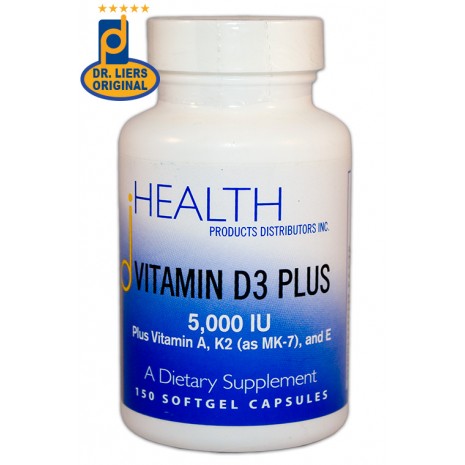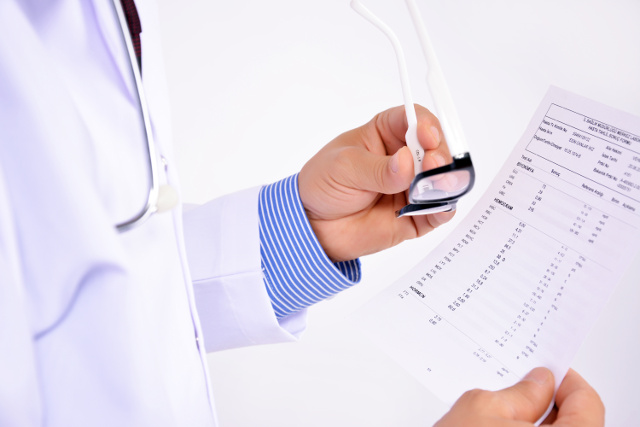I often receive questions about various HPDI products. This month, I want to answer a question I got about our Vitamin D3 PLUS supplement.
It is my hope that periodic answers to your questions may help others when making choices regarding nutritional supplements. HPDI always strives to formulate the highest purity and highest quality supplements available. Please read about our four-pillar Approach to Formulation.
A QUESTION ABOUT THE PURITY OF FISH OIL IN VITAMIN D3 PLUS
QUESTION: I see the source of the Vitamin D3 and Vitamin A in the product is fish liver oil. Are there any test results available for mercury or other heavy metals?
HANK: I am always careful when formulating any product to minimize any potential toxins. Vitamin D3 and Vitamin A from fish liver oils, as are found in the HPDI Vitamin D3 Plus formula, are highly concentrated sources which means that only milligram amounts are needed. That by itself means there would be very low levels of toxins.
This fact is verified by independent testing that shows mercury levels of less than 0.003 ppm, lead levels of less than 0.005 ppm, cadmium levels of less than 0.002 ppm, and arsenic levels of less than 0.004 ppm. “Less than” means the amounts are below the detection limits! Very low levels, indeed. View the test results below.
Test Results:
1. Test results for Cadmium, Mercury & Lead: https://www.integratedhealth.com/downloads/d3Test1.pdf
2. Test results for Inorganic Arsenic: https://www.integratedhealth.com/downloads/d3Test2.pdf

MORE ABOUT VITAMIN D3 PLUS
Vitamin D3 PLUS is formulated as an advanced Vitamin D3 formula. It incorporates various cutting-edge design features and offers many benefits. Here are some relevant facts about HPDI’s Vitamin D3 PLUS:
• The formula provides Vitamin D3 (cholecalciferol) from highly purified fish liver oil. We avoid the use of Vitamin D2 because of a greater potential for toxicity, poorer absorption, and reduced effectiveness. Furthermore, we prefer Vitamin D3 in a softgel form. In softgels, the oil is incorporated without using other ingredients (like corn starch) used for microencapsulation to make Vitamin D into a powder that is then put into a capsule. HPDI avoids using fillers and excipients in products whenever possible. (See A Pure Approach to Formulation for our four pillar system of supplement design).
• Vitamin D research during the last 10 years shows an optimal amount of supplemental Vitamin D for most people of about 5,000 IU. This is what is generally needed to get blood levels of Vitamin D to the level of 50–80 ng/ml (nanograms per milliliter).
• Non-GMO sunflower lecithin acts as an emulsifier of Vitamin D and ensures effective absorption of the Vitamin D in Vitamin D3 PLUS. In addition, the use of rice bran oil further supports absorption of fat-soluble Vitamin D. Optimizing absorption of Vitamin D is critical especially in cases of Crohn’s disease, Celiac disease (gluten intolerance), and irritable bowel syndrome.
• Because the oils involved are susceptible to oxidation, we include Oryza rice bran oil in Vitamin D3 PLUS. Oryza rice bran oil contains significant amounts of Vitamin E (in the form of mixed tocotrienols and tocopherols) that prevents oxidation.
• Vitamin D3 is combined with Vitamin A because they act synergistically. It is known that high dose Vitamin A without Vitamin D can cause bone loss. However, there is no observed bone loss when adequate Vitamin D (more than 2,000 IU daily) is taken together with Vitamin A. Chris Masterjohn eloquently discusses this topic in his seminal article “Vitamin A on Trial: Does Vitamin A Cause Osteoporosis” (see Weston A. Price Foundation website). Also, Masterjohn states that Vitamin A taken in conjunction with Vitamin D is necessary for proper bone remodeling. We include 1,000 IU of Vitamin A along with Vitamin D3 in Vitamin D3 PLUS.
• Vitamin K2 (especially as Menaquinone-7) is necessary for the proper activation of bone matrix proteins by conferring upon them the physical ability to bind calcium. Chris Masterjohn has beautifully discussed this issue in his paper “On the Trail of the Elusive X-Factor: A Sixty-Two–Year-Old Mystery Finally Solved” (see Weston A. Price Foundation website). Because Vitamin K2 is needed to facilitate the function of Vitamin D in proper bone formation (including teeth), Masterjohn states that Vitamin D toxicity is most likely a case of Vitamin K2 deficiency.
• In their book Health Benefits of Vitamin K-2, Larry M. Howard and Anthony G. Payne assert that as little as six mcg of Vitamin K2 (as MK-7) can be beneficial to the body. We therefore include 10 mcg of MK-7 per softgel in Vitamin D3 PLUS. In addition, research has shown that Vitamin K2 can help remove calcium from soft tissues in the body and instead put the calcium into bony structures. Vitamin K2 is found naturally in fermented foods such as cheeses, sauerkraut, dairy products, natto (i.e., a traditional Japanese dish of fermented soybeans), and in dairy products, eggs, and certain meats.
• In light of recent research on Vitamin D, we recommend most people take 5,000 IU of Vitamin D3 daily (unless there is some constraining lifestyle factor or compelling medical reason). Due to its long half-life (about 30 days) in the body, Vitamin D3 PLUS can be taken effectively in smaller doses if needed (e.g., 5,000 IU taken fewer times per week). For example, taking one capsule once per week would give a daily equivalent dose of about 714 IU (i.e., 5,000 IU divided by seven days).
• Other nutrients ideally taken with Vitamin D3 in order to achieve maximum benefit include magnesium, calcium, zinc, and boron. These additional nutrients are included in HPDI’s foundational supplements and bone formulas (Bone Jour!, Bone Guardian, and Cal/Mag Plus).

SURPRISING VITAMIN D3 FACTS
• A human being optimally produces 10,000–20,000 IU of Vitamin D3 (cholecalciferol) when exposed to full sunlight on a significant portion of skin for about 30 minutes.
• The body only starts to get the full benefits of Vitamin D3 after it has produced or taken orally about 5,000 IU daily.
• In this world of sun avoidance, sun blocks, working indoors, latitudinal effects, etc. a majority of the population suffers in multiple ways from deficiency (or less than optimal levels) of Vitamin D3.
• Vitamin D3 is actually a steroid hormone with very powerful effects and, with few exceptions, cannot be obtained in sufficient amounts from your diet.
GOT QUESTIONS ABOUT HPDI PRODUCTS?
We at HPDI welcome questions about our products. Please use our contact webform or email your questions to: support(at)integratedhealth.com.


